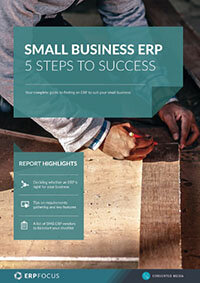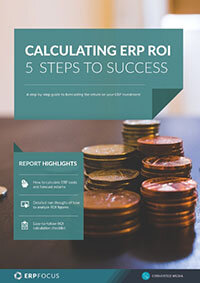How to budget for a small business ERP
Although there are hosts of technological advantages available for those who choose to run small businesses in today’s global market, there are also financial challenges.
As one might expect, small business budgets are largely managed and limited by cost, rather than gross revenue.
Consequently, while ERP has now become a legitimate opportunity for many small players, cost of ownership issues can pose budget problems unless planned for properly. To take the edge off this potential threat, here’s a very short budget framework to help you iron out any issues you run into.
Small business ERP budgets need to be tight
In some ways budget management in the small enterprise is much more challenging and complex than budget planning within a large corporation. If a company is big and strong enough a single financial mistake won’t destroy its future.
However, when playing ‘small ball’ any ERP budget consideration should not only require detailed cost investigations, but also liberal applications of experience and wise council before pulling the trigger. After all, way down in the weeds you usually only get one shot, so you’d better hit the target the first time - or pay a bigger price later.
Defining your ERP budget
Assuming that you have already decided that ERP will work for you operationally, the next step is which system will be most advantageous, and how much that advantage is likely to cost.
Get your comprehensive guide to selecting small business ERP
From a budgeting perspective today’s market offers two central decisions on how to pay for your ERP:
- Deciding between on-premise ERP and cloud (SaaS) ERP
- Deciding between standard (proprietary) software and open source ERP
Open source software is a great way for small businesses to save on system costs, though there are pros and cons for all of these options. We’ll start by looking at the differences between cloud and on-premise solutions:
| On-premise | Cloud | |
|---|---|---|
| Cost | Additional implementation costs common (hardware). Large upfront payment but can be cheaper in the long term | Faster, cheaper implementation, with cost spread over monthly payments. Cheaper upfront but not necessarily long-term |
| Customization | More flexible to customize in general, if you have the IT resources to keep them working as your infrastructure evolves | Difficult to do without access to vendor APIs |
| Data | You have total control of where your data is stored | Data is stored in a third-party data center, which you have limited access to |
| Updates | You have access to updates but are responsible for implementing them across your network yourself | You are on the same release as all other customers. Vendors often automate releases, so there’s little effort involved on your part |
| Support and maintenance | More expensive for extensive troubleshooting as customer service require a detailed knowledge of your infrastructure | Generally lower support costs, with maintenance charges built into monthly subscription |
Now let’s have a look and proprietary software and open source:
| Proprietary | Open source | |
|---|---|---|
| Cost | Software is not free, prices for the system, support, maintenance etc are set by the vendor | Software is free - though be wary of the cost of staff hours spent coding and implementing the system |
| IT requirements | Variable - depending on whether cloud/on-premise | Extensive, as you need to work with source code customize and implement the software yourself |
| Data | More difficult to customize than open source, but not impossible | Very flexible, if you have the in-house knowledge to do so. |
Further components of an ERP budget
Once you’ve decided on a delivery method for your ERP, it becomes significantly easier to construct a workable budget. It’s usually a good idea to add an extra 10% onto whatever you calculate to mitigate risk.
If you chose on-premise software, you’ll need to add the following costs to your budget:
- Hardware
- A large upfront license fee
- Implementation fees
- Training
- Employee overtime
In the case of cloud ERP, you’ll still need to budget for employee overtime, training and implementation efforts (although these will be less extensive than those for on-premise ERP), though there will be no hardware costs as cloud software is delivered through the web.
Of course, if you’re spinning up an open source system then you’ll likely be implementing it yourself, which saves on cost. You will need, however, to factor in costs for external development if you’re short-handed in this area internally.
Free white paper

Small business ERP: five steps to success

Featured white papers
Related articles
-

Top ERP systems for small businesses
Which ERP solutions are best for small business needs? Information on features, scalability and m...
-

CMMC Compliance: What Aerospace and Defense Manufacturers Need to Know
Key insights on CMMC compliance, deadlines, and securing DoD contracts with CMMC 2.0 certificatio...
-

Top 10 ERP selection criteria (including checklist)
The most important ERP selection criteria you should keep in mind during your selection process.


